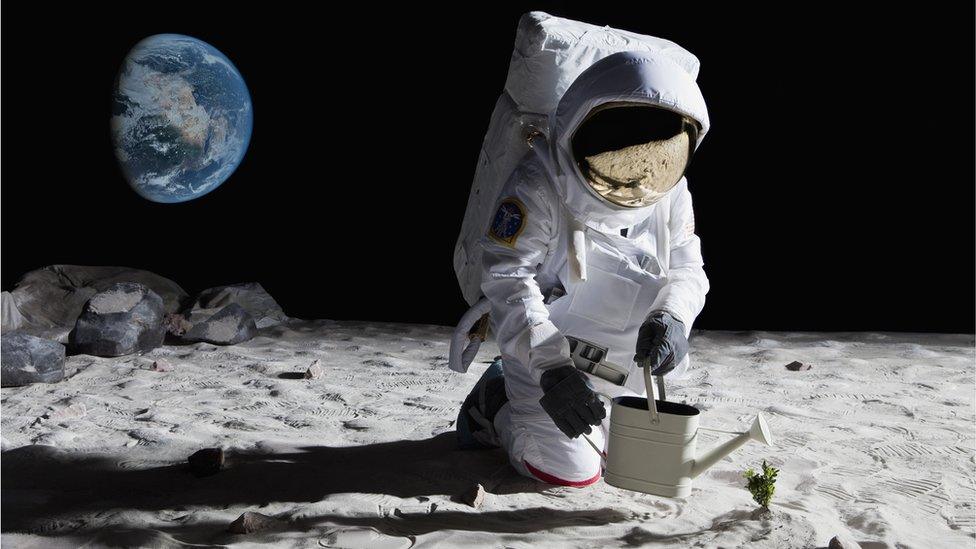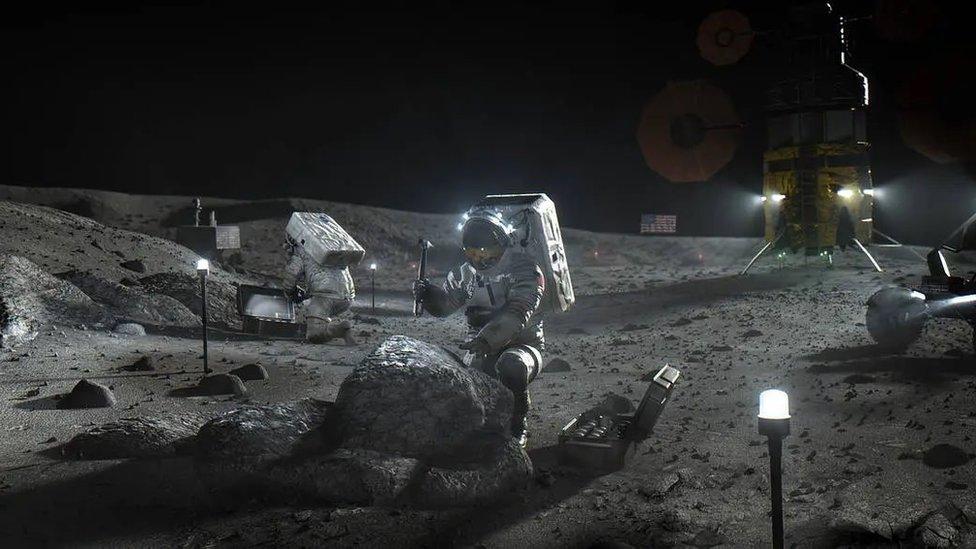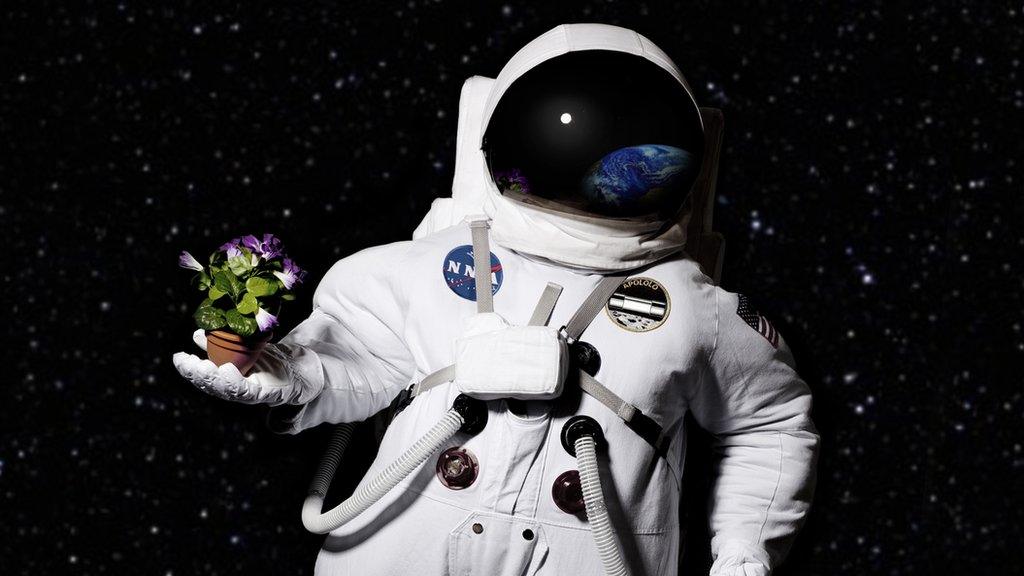Artemis III: Nasa mission to grow plants on the Moon
- Published
- comments

Can you grow plants on the Moon? That's what astronauts are trying to find out on a new mission.
The Nasa Artemis III Moon mission blasts off in 2026, and aims to help scientists learn more about how the Moon formed and evolved, and whether of not humans could live there.
Now, Nasa has revealed three science experiments that astronauts will be carrying out on the upcoming upcoming lunar mission.
As part of the experiments the astronauts will be investigating moonquakes, trying to find ice and water on the Moon, and discovering whether or not plants can grow there.
What is the Artemis Moon programme?

The Artemis missions are a three-part project organised by the US space agency Nasa.
The aim is to help us to learn more about the Moon, and to send humans back to the lunar surface by 2026, for the first time in 50 years.
If the missions are successful, experts hope it can be used to help build a long-term human base on the Moon for years to come.
The first Artemis mission took place in 2022, and was a way for the scientists and engineers to test the equipment they would like to use on future Artemis missions, without any astronauts on board.
The second mission will see astronauts blast off into space to fly around the Moon, before returning to Earth, and is set to take place in 2025.
The final mission Artemis III is currently scheduled to take place around 2026, and over the course of around 30 days it aims to have astronauts living and orbiting around the Moon, and even visiting the Moon's surface for a few days to do experiments, before returning to Earth.
What are the experiments?

The three experiments astronauts will be doing as part of the Artemis III mission on the Moon are:
Lunar Environment Monitoring Station (LEMS) - which will use a seismometer - a tool that scientists use to monitor earthquakes - to measure moonquakes and help us to learn more about how the Moon was formed.
Lunar Effects on Agricultural Flora (LEAF) - which will see if plants can grow on the Moon's surface, and how they are affected by the light and atmosphere.
The Lunar Dielectric Analyzer (LDA) - will use a tool to help search for water and ice on the Moon's surface - which could be used in the future as a source of drinking water, and even rocket propellant.
